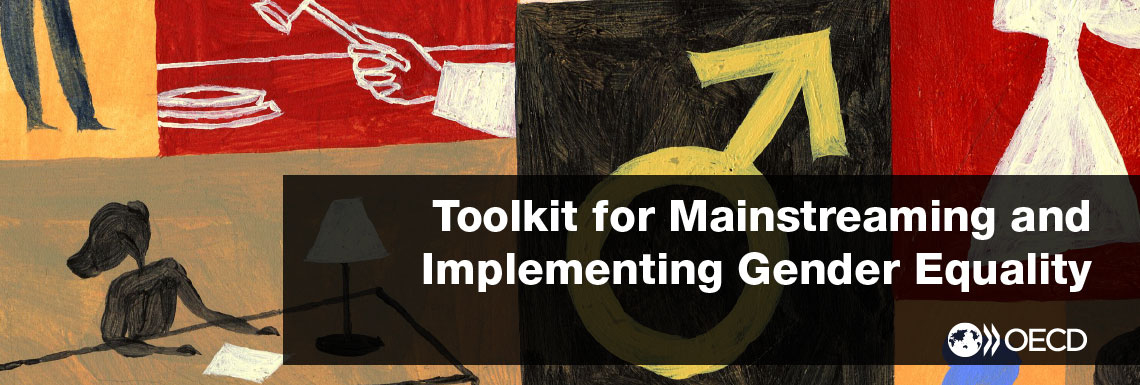Data are collected, accessible and disseminated
SELF-ASSESSMENT QUESTION
- Are specific institutions/departments/units mandated and able to collect relevant data and information based on agreed upon gender impact indicators?
- Are data and information (regularly) collected at different levels of government received by and their accessibility centralised within a specific institution?
- Are data and information collected adequately circulated to relevant actors and awareness raised on remaining gaps and challenges?
- Is the national statistics bureau engaged in collecting gender disaggregated data and supporting data collection against national gender impact indicators?
WHY IS IT IMPORTANT?
For decision and policy making to be gender-sensitive and evidence-based, it must rely on high quality, readily accessible gender-disaggregated data. Without such data, it is very difficult to understand the impact of gender equality and mainstreaming strategies and initiatives or the consequences of policies. Data on gender equality and mainstreaming in a country should be easy to access and allow results to be tracked against national and international targets and benchmarks. Although information to measure empowerment of women and men is increasingly available in most countries, significant gaps remain in areas such as gender bias and gender-based discrimination, gender-based violence, opportunities to reconcile professional and private life and entrepreneurship. CDeveloping common regional or international indicators could encourage countries to use such measurement tools.
ACTIONS TO CONSIDER
- Sensitize and engage national statistics bureau to ensure collection of gender-disaggregated data across all sectors and in line with national gender impact indicators;
- Sensitize and engage relevant stakeholders (including NGOs, service providers, etc) to collect sex-disaggregated data against national gender impact indicators and in fields relevant to measure progress regarding national gender equality goals;
- Promote national, regional and international coordination and cooperation mechanisms to promote consistent gender equality data collection and measurement;
- Require data disaggregation by gender, as well as the incorporation of a gender perspective within national statistical legislation;
- Ensure that reliable data management systems are in place for collecting gender-disaggregated data.
PITFALLS TO AVOID
- Gender impact indicators are vague and do not allow for tracking results against targets and/or for comparison with international and regional benchmarks;
- Data collecting and producing bodies lack the necessary resources to strengthen gender focus and regularize sex disaggregation (training, specialized expertise, budget) to produce gender-disaggregated data;
- Relevant data and information are collected not regularly and not across all sectors;
- Data and information collected remain stored across multiple institutions and are not easily accessible.
COUNTRY EXAMPLES
New Zealand
In 2009 and 2010, New Zealand’s Ministry of Women’s Affairs published Indicators for Change: Tracking the Progress of New Zealand Women, which provides a wealth of information on the social and economic status of women and gives policy makers valuable insights into where gender gaps persist.
United States
In 2011, the White House Council on Women and Girls published a landmark set of social and economic well- being indicators grouped into five areas of interest – people, families and income, education, employment, health, and crime and violence – to compile a baseline on how women are faring in the United States and how these trends have changed over time.
Norway
Since 2008, Statistics Norway has published national gender equality indicators, including: share of one- to five-year-olds in kindergarten, gender distribution in municipal council representatives, education; gender distribution in the workforce, distribution of income, gender distribution in part-time work, use of fathers’ quotas; gender distribution in business structures, gender distribution in the public sector; gender distribution in the private sector, gender distribution among leaders, and gender distribution in educational programmes. Results are published on a national scale and are also available by county and municipality to allow policy makers to address regional and local issues.
Austria
Reflecting the effects and impacts of gender equality policies is the final and most important step of performance management in Austria. The ministries have to undergo a self-evaluation which entails monitoring the performance indicators and describing causal effects of implemented activities of a policy field. The Federal Performance Management Office is monitoring, collecting systematically and undertaking quality assurance of the results to afterwards compiling a standardized report and submitting it to Parliament and the public. In addition, new web based visualization techniques have been developed that allow an individual perspective on the data and better presentation of horizontal coherence, time series and vertical integration with impact assessments on gender equality to raise awareness and facilitate in-depth discussions (publicly accessible via www.wirkungsmonitoring.gv.at). Moreover, the website provides an overview about the governmental priorities focusing on gender equality in a so-called ‘gender land map’ which is connected to the last years’ evaluation results.

